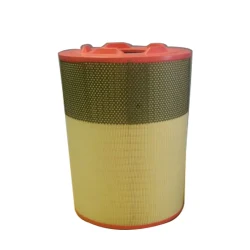Here's a step-by-step guide on how to replace an air filter in a typical car
2024-03-22
Replacing an air filter is a relatively straightforward maintenance task that can be done with basic tools. Here's a step-by-step guide on how to replace an air filter in a typical car:
Tools and Materials Needed:
1. New air filter (make sure it matches the specifications of your car)
2. Owner's manual (for specific instructions and guidance)
3. Screwdriver or socket set (if necessary)
4. Cleaning cloth or vacuum cleaner (optional, for cleaning air filter housing)
Steps to Replace the Air Filter:
1. Locate the Air Filter Housing: The air filter housing is typically located in the engine compartment. Refer to your owner's manual to find the exact location.
2. Open the Air Filter Housing: Depending on the car model, the air filter housing may have clips, screws, or latches securing it in place. Use the appropriate tool to open the housing and access the old air filter.
3. Remove the Old Air Filter: Carefully lift out the old air filter from the housing. Take note of its orientation and how it fits in the housing to ensure proper installation of the new filter.
4. Inspect the Old Air Filter: Examine the old air filter for signs of dirt, debris, or damage. A dirty or clogged air filter may restrict airflow to the engine, reducing performance and fuel efficiency.
5. Clean the Air Filter Housing (Optional): If the air filter housing is dirty or contains debris, use a cleaning cloth or vacuum cleaner to remove any dirt or debris from the housing. Ensure that the housing is clean before installing the new filter.
6. Install the New Air Filter: Insert the new air filter into the housing, making sure it fits snugly and aligns with the housing properly. Follow any directional arrows or markings on the filter to ensure correct orientation.
7. Close the Air Filter Housing: Once the new filter is in place, close the air filter housing securely. Make sure all clips, screws, or latches are properly fastened to prevent air leaks.
8. Test the Air Filter: Start the engine and let it idle for a few moments to ensure that the new air filter is properly installed and seated. Listen for any unusual noises or air leaks.
9. Dispose of the Old Air Filter: Properly dispose of the old air filter according to local regulations or recycling guidelines. Some auto parts stores may offer recycling services for old air filters.
10. Record the Replacement: It's a good practice to record the date and mileage of the air filter replacement in your vehicle maintenance log. This helps you keep track of when the filter was last replaced and when it may need to be replaced again in the future.
By following these steps, you can easily replace the air filter in your car to ensure optimal engine performance, fuel efficiency, and air quality. Regular air filter replacement is an essential part of routine vehicle maintenance and helps protect your engine from dirt, debris, and contaminants.



